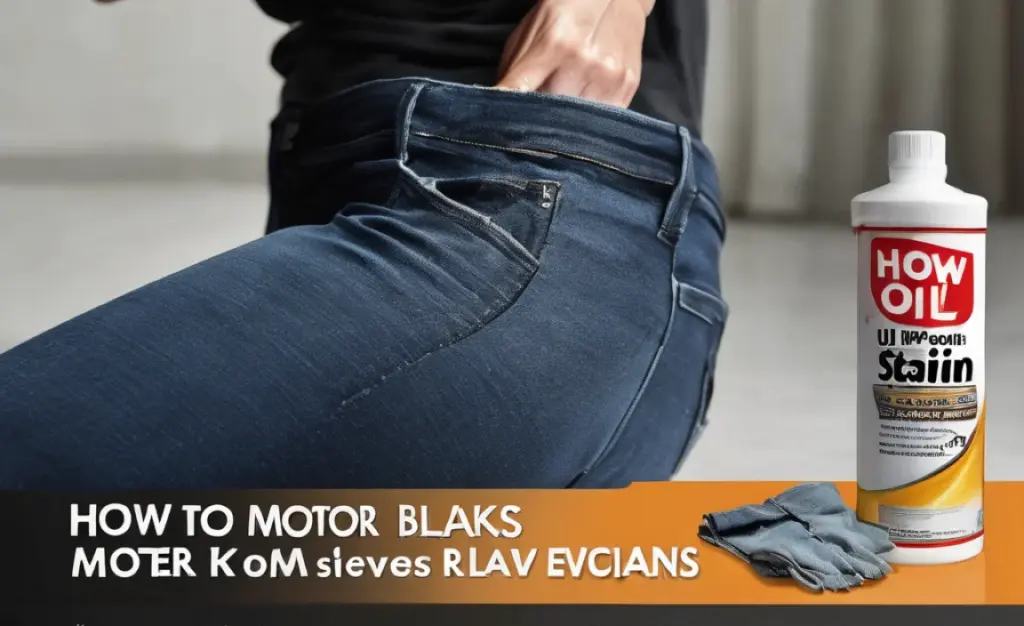Quick Summary: To remove motor oil from black jeans, act fast! Blot the stain, then pre-treat with a degreasing dish soap before washing. For stubborn spots, a baking soda paste or an enzyme-based cleaner can work wonders. Always check before drying.
Getting motor oil on your favorite black jeans can feel like a disaster. That dark, greasy mark can seem impossible to lift, especially from deep black fabric. But don’t worry, it’s usually a fixable problem. With the right approach and a few common household items, you can say goodbye to oil stains and keep your jeans looking as good as new. This guide will walk you through simple, proven methods to get that oil out effectively.
Understanding Motor Oil Stains on Black Jeans
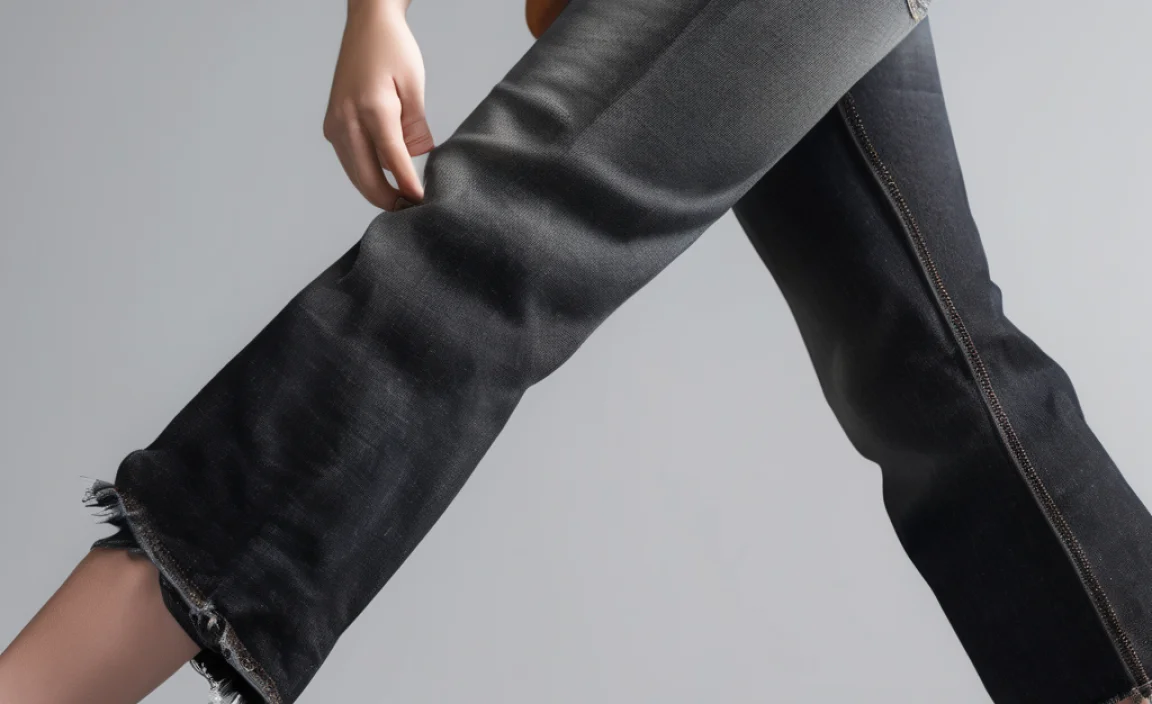
Motor oil is a tough stain because it’s petroleum-based. This means it doesn’t mix well with water, making it cling stubbornly to fabric fibers. Black jeans, while stylish, can make these stains particularly noticeable because the oil often lightens the dye or leaves a dull residue. The key to successful removal is understanding the nature of the stain and acting quickly before it sets into the fabric.
The longer an oil stain sits, the harder it is to remove. Fresh stains are always easier. This is because the oil has not had time to bond deeply with the fabric’s threads. Once the oil penetrates and dries, it becomes more resistant to washing and treatment. Therefore, the immediate response to an oil stain is crucial for a successful outcome.
Essential Supplies for Oil Stain Removal
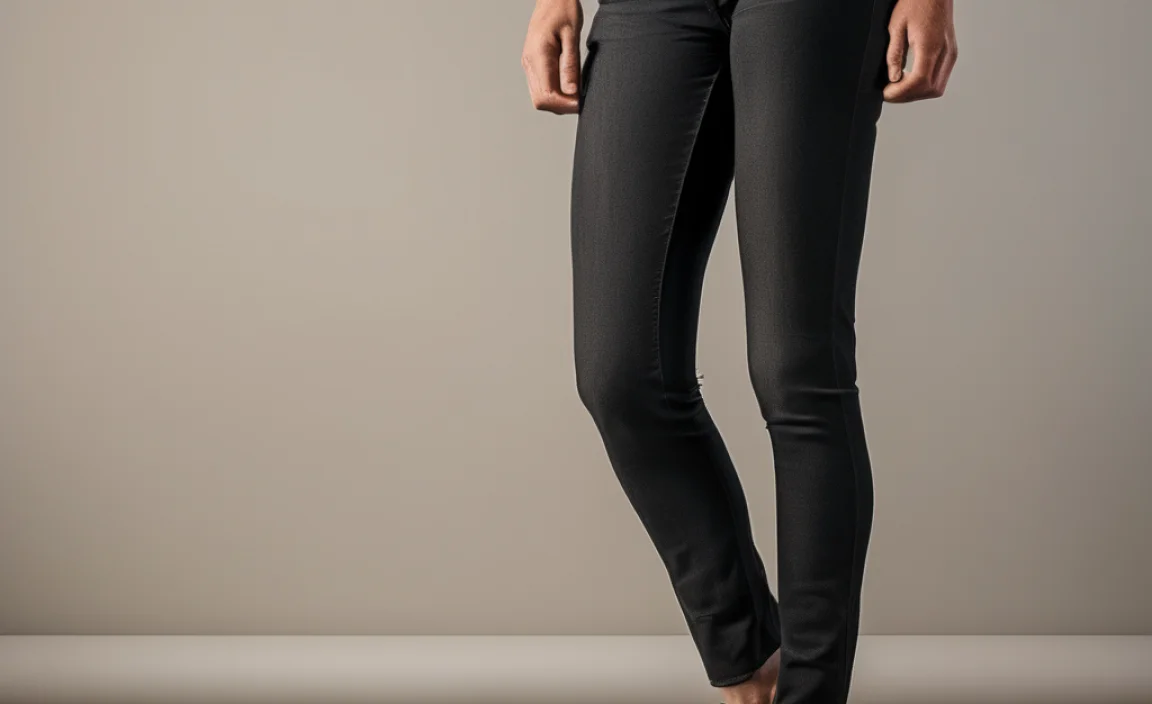
Before you begin, gather these common household items. Having them ready will make the process smoother and more effective:
- Degreasing Dish Soap: Brands like Dawn are excellent at breaking down grease.
- Baking Soda: A natural absorbent and mild abrasive.
- Cornstarch or Talcum Powder: Also great for absorbing excess oil.
- Soft-bristled Brush or Old Toothbrush: For gently working in cleaning agents.
- Clean White Cloths or Paper Towels: For blotting and testing.
- Laundry Detergent: Your regular detergent, preferably with enzymes.
- Optional: Enzyme-based stain remover (specifically for grease/oil).
Step-by-Step Guide: How to Remove Motor Oil From Black Jeans
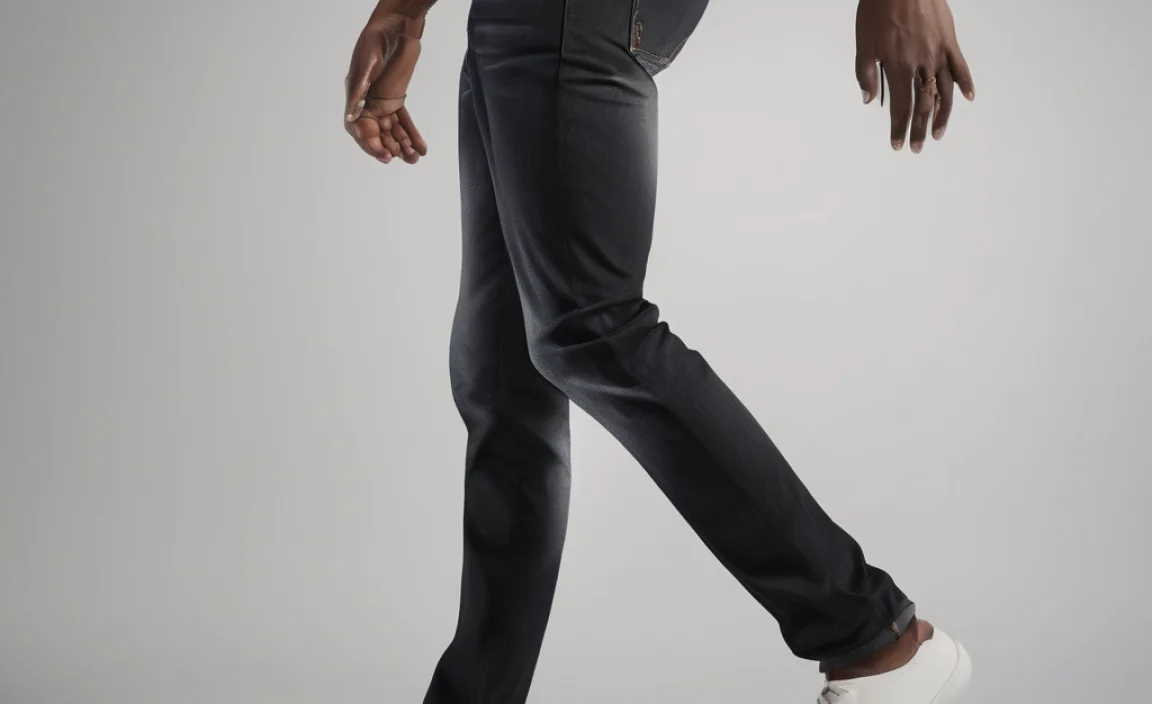
Follow these steps carefully for the best chance of removing motor oil stains from your black jeans. Remember to be patient and gentle with the fabric.
Step 1: Blot the Excess Oil
As soon as you notice the stain, grab a clean paper towel or a soft cloth. Gently blot the oily area. Do not rub, as this will push the oil deeper into the fabric and spread the stain. The goal here is to absorb as much of the surface oil as possible before it soaks in.
Step 2: Apply an Absorbent (If Fresh)
If the stain is fresh, sprinkle a generous amount of baking soda, cornstarch, or talcum powder directly onto the oil spot. Let it sit for at least 15-30 minutes (or even a few hours for very heavy oil). This powder will act like a sponge, drawing the oil out of the jeans. You’ll see the powder clump up as it absorbs the grease. After it has sat, gently brush off or shake out the powder.
This absorbent step is crucial for managing the liquid oil. It prevents the oil from spreading further and gives you a cleaner surface to work with for the next treatment. Think of it as soaking up a spill before you even try to wipe it down.
Step 3: Pre-Treat with Degreasing Dish Soap
Now, apply a small amount of degreasing dish soap directly onto the stained area. Gently work it into the fabric using your fingers or a soft-bristled brush. Let the soap sit on the stain for about 10-15 minutes. Dish soap is specifically designed to cut through grease, making it highly effective against motor oil. Ensure you use a soap that is clear or lightly colored to avoid transferring dye onto your black jeans.
For tougher stains, you might want to create a paste. Mix a tablespoon of baking soda with enough dish soap to form a thick paste. Apply this paste to the stain and gently rub it in with a brush. Let this mixture sit for at least 30 minutes, or even longer for very stubborn stains.
Step 4: Wash the Jeans
After pre-treating, wash the jeans as you normally would, but with a few key adjustments:
- Use the Hottest Water Setting Safe for Black Fabric: Check the care label on your jeans. Hot water is more effective at dissolving grease. For most black denim, a warm or hot setting is usually fine, but always verify this to avoid damaging the fabric or color.
- Add Extra Detergent: Use your regular laundry detergent, and consider adding a little extra. Detergent with enzymes is particularly good at breaking down protein and oil stains. You can find excellent enzyme-based detergents at most grocery stores. For more aggressive cleaning, you might consider adding a laundry booster designed for grease or stain removal.
- Wash with Similar Colors: Always wash black jeans with other dark-colored items to prevent color bleeding.
A reliable source for laundry advice is the Federal Trade Commission (FTC), which offers straightforward tips on various household tasks, including garment care.
Step 5: Check for Stains BEFORE Drying
This is arguably the most critical step after washing. Before you put your jeans in the dryer, carefully inspect the stained area. If the stain is still visible, even faintly, do NOT put them in the dryer. Heat from the dryer will set the stain permanently, making it nearly impossible to remove later.
If the stain persists, repeat the pre-treatment steps (dish soap, possibly baking soda paste) and wash again. You might also consider using a specialized enzyme-based laundry pre-treater specifically designed for grease and oil stains. Products containing enzymes are highly effective because they break down the oil molecules.
Step 6: Air Dry or Tumble Dry on Low
Once you are confident that the stain is completely gone, you can dry your jeans. For best results and to preserve the color and fit of your black jeans, air drying is always recommended. If you must use a dryer, opt for a low heat setting. High heat can cause shrinkage and fade black fabrics over time.
Alternative Methods for Stubborn Stains

If the initial methods don’t completely remove the oil, here are a couple of other effective options:
Method 1: Baking Soda Paste
This is essentially an intensified version of step 2 and 3. Mix baking soda with just enough water (or a little dish soap) to form a thick paste. Apply this paste generously to the stained area. Let it dry completely. The baking soda will draw out more oil as it dries. Once dry, brush off the residue and then wash as usual.
Method 2: Commercial Enzyme Pre-Treatment
There are many excellent commercial pre-treaters available that are formulated with enzymes to break down oil and grease effectively. Brands like Shout, OxiClean, or Resolve often have products specifically for grease stains. Follow the product instructions carefully. Typically, you’ll apply the product, let it sit for a specified time, and then wash.
When choosing a pre-treater, look for one that specifies it’s for grease and oil. The enzymes in these products are biological catalysts that help break down complex organic molecules like those found in motor oil. You can often find these at your local supermarket or pharmacy.
Things to Avoid When Removing Oil Stains
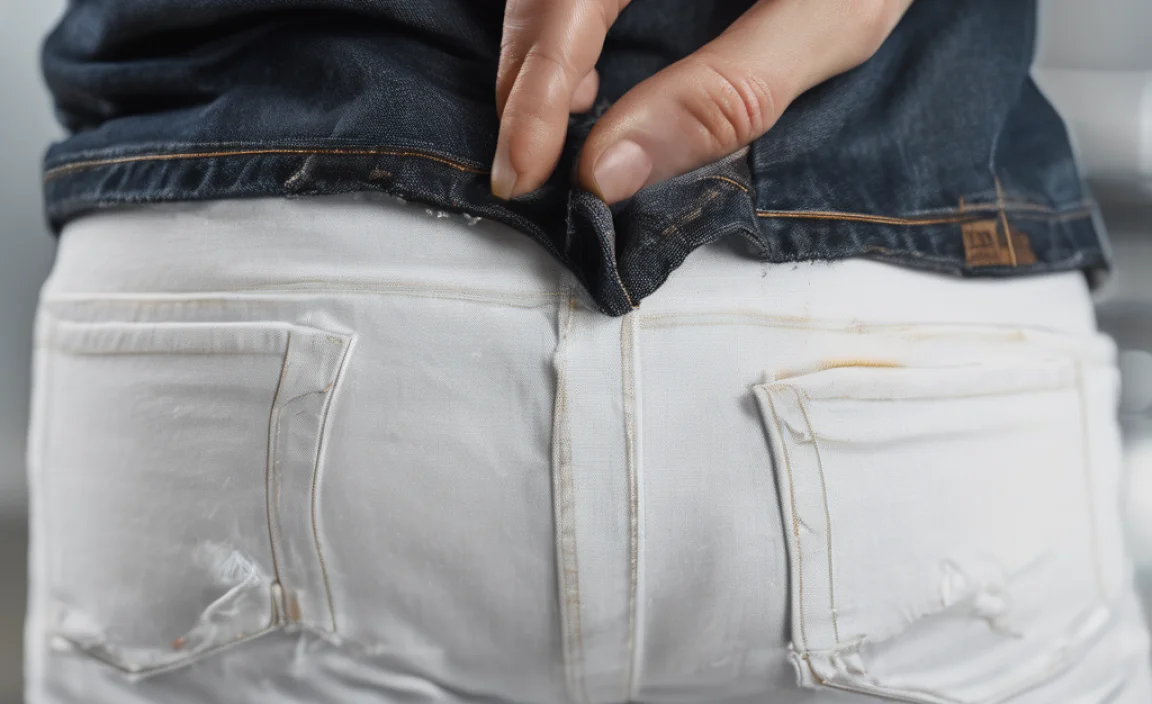
Certain actions can make oil stains worse or damage your black jeans. Be sure to steer clear of these:
- Rubbing Vigorously: This can spread the stain and wear down the fabric.
- Using Bleach: Bleach will permanently remove the black dye from your jeans, leaving a noticeable lightened or white spot.
- Drying Before the Stain is Gone: As mentioned, heat sets stains.
- Using Colored Soaps or Detergents: These can transfer their own color onto your black fabric.
Understanding what not to do is as important as knowing the correct steps. For instance, spot-testing any cleaning solution on an inconspicuous area of the jeans (like an inside seam) before applying it to the stain is always a wise precaution to ensure it doesn’t affect the dye.
Why Different Methods Work
The effectiveness of these methods comes down to the science of cleaning:
- Absorbents (Baking Soda, Cornstarch): These powders have a porous structure that can physically draw liquid oil out of the fabric fibers.
- Surfactants (Dish Soap): Dish soaps are excellent at breaking the surface tension of water and surrounding oil molecules (emulsification), making them easier to lift away.
- Enzymes: Specific enzymes in laundry products can chemically break down the long chains of hydrocarbons that make up motor oil, turning them into smaller, water-soluble molecules that can be washed away.
These principles are widely recognized in textile cleaning. For example, the American Cleaning Institute provides comprehensive information on stain removal principles and techniques for various types of household soiling.
Table: Stain Removal Effectiveness Comparison
Here’s a quick comparison of common methods:
| Method | Pros | Cons | Best For |
|---|---|---|---|
| Dish Soap & Baking Soda Paste | Readily available, effective on fresh to moderate stains, degreasing action. | May require multiple applications for tough stains. | Fresh to moderately set oil stains. |
| Absorbent Powder (Cornstarch/Talc) | Excellent for immediate absorption of liquid oil. | Less effective on its own for stains that have already set. | Very fresh, liquid oil spills. |
| Enzyme Pre-Treatment | Highly effective on tough, set-in oil stains. | Requires purchasing a specific product, must follow directions carefully. | Stubborn, older, or heavily saturated oil stains. |
| Rubbing Alcohol (Test First!) | Can help dissolve some heavier oil components. | Risky for black dye, may cause fading or discoloration. Always test first. | As a last resort, for very specific types of oil. |
Frequently Asked Questions
Q1: How fast do I need to treat an oil stain on black jeans?
The sooner, the better. Fresh stains are much easier to remove than those that have had time to set into the fabric fibers. Blotting and applying an absorbent immediately can prevent a significant portion of the oil from soaking in.
Q2: Can I use my regular laundry detergent for motor oil stains?
Your regular detergent can help, especially if it contains enzymes. However, for motor oil, it’s best to pre-treat the stain with a degreasing dish soap or a specialized enzyme-based stain remover before washing with your regular detergent.
Q3: What if the oil stain made my black jeans look lighter?
This is common because oil can displace dye. After successful stain removal, the color should return. If the area seems permanently faded, you might consider a fabric dye specifically for black denim. However, this is a more advanced step usually not needed if the stain is properly treated before heat is applied.
Q4: Is it safe to use baking soda on black jeans?
Yes, baking soda is generally safe for most fabrics, including black denim. It acts as an absorbent and a mild abrasive. Make sure to rinse it out thoroughly. When using it as a paste, applying gentle pressure with a soft brush is recommended to avoid damaging the threads.
Q5: How can I prevent motor oil stains in the future?
When working on vehicles or in areas where oil is present, wear old clothes or coveralls that you don’t mind getting dirty. If you must wear your good jeans, consider wearing an apron or covering the front of your legs with a towel or protective cloth.
Q6: What should I do if the stain is old and dried?
For old, dried stains, a strong enzyme-based stain remover is usually the most effective. You might need to let the pre-treatment soak for a longer period, potentially several hours or overnight, depending on the product instructions and the severity of the stain. Repeat treatments may be necessary.
Conclusion
Dealing with a motor oil stain on your black jeans doesn’t have to be a source of stress. By acting quickly and using the right techniques, you can effectively lift these tough stains. Remember the key steps: blot, absorb, pre-treat with a degreaser, wash, and critically, check before you dry. With these proven methods and a little patience, your black jeans can be restored to their former glory, ready for you to wear with confidence.


